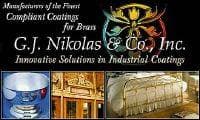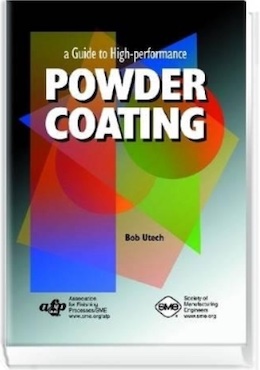
-----
Powder coating color differences based on substrate
If you paint one part from aluminum and the other regular steel with white powder paint would there be a visible color differences?
Leo Olivalighting - Chicago, Illinois
Hello Leo,
The paint's opacity, or ability to hide the substrate, would change the color. If you were applying a translucent color onto the two substrates (i.e., change the steel or aluminum to a brass color) you would have two different colors, since a dyed paint has minimal hiding. The curing schedule might alter the color, but don't quote me on that (my apologies to the wise powder-coaters out there if that is wrong).
Jake KochG. J. Nikolas &Co.,Inc.
Bellwood, Illinois

If the parts were of similar size, shape and most importantly, surface finish, the color would be close if the same thickness of the same paint was put on it.
James Watts- Navarre, Florida
As previously stated, generally you will not see a color variation. A gloss meter will see a problem before you will. In the cases I have seen where there was visible differences, it was caused by inadequate ovens. Some were uneven heat zones (hot spots)and some were caused by the speed in which the parts entered the oven, the temperatures in the oven and overall time within the oven. It can be assumed that given two parts the same geometric shape and thickness, except for one being aluminum and one being steel, the aluminum will cure quicker. This should not be a problem because most powders are formulated for overcure, many being over 100% overcure before significant problems occur. The key to insuring uniformity is making sure your oven is designed properly, maintained and process control is maintained. It's a good idea to run a oven profile every so often to make sure nothing has changed. You can and should also have the gas train checked every so often to make sure even gas pressures are being delivered. Check the controller to make sure it is calibrated. By all means, make sure you control the process...speed, temperature and amount of material entering the oven. A full oven of steel parts takes more heat to cure the parts. Most burners that are operating properly will not have a problem going to high fire, but if the burner is undersized, you may have color differences. I know I'm going out on a branch here, but these are all problems that I have seen.
 Bob Utech Benson, Minnesota |
 Ed. note: Bob is the author of: "High Performance powder Coating" on eBay or AbeBooks or Amazon [affil link] |
Q, A, or Comment on THIS thread -or- Start a NEW Thread